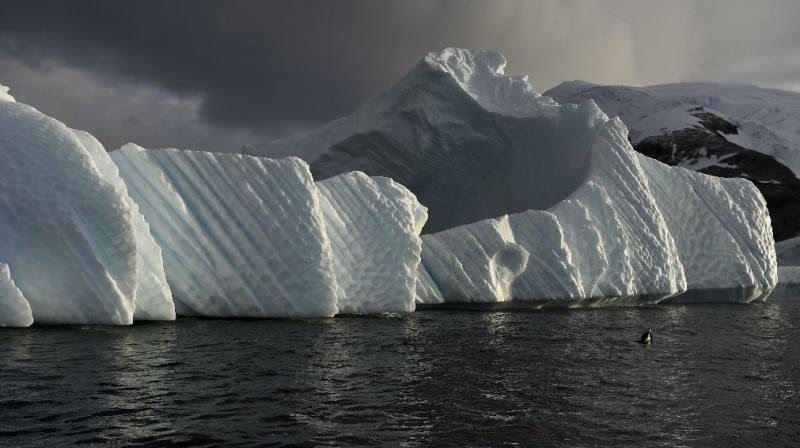Antarctic glacier thinning more rapidly than thought: study

Paris: A large glacier in West Antarctica lost up to half a kilometre in thickness in seven years, thinning more quickly than scientists thought possible, according to a study released today.
The Smith Glacier, spilling into the Amundsen Sea, shed up to 70 metres (230 feet) per year between 2002 and 2009, according to the study, based on NASA data collected during aerial flyovers. "If I had been using data from only one instrument, I wouldn't have believed what I was looking at because the thinning was so large," said lead author Ala Khazendar, a nresearcher at NASA's Jet Propulsion Laboratory.
Ice-penetrating radar and laser altimetry both yielded the same results, he reported in Nature Communications. After 2009, Smith continued to shed mass, though at a slightly slower pace, Khazendar told AFP. Earlier studies using less precise techniques estimated that two ice shelves buttressing the glacier lost about 12 metres (40 feet) in thickness each year over the same period.
Ocean-fronting glaciers are dense bodies of ice atop land, pushed by gravity and their own weight toward the sea. Adjoining ice shelves -- up to two kilometres (1.6 miles) thick -- float on water. Ice atop West Antarctica and Greenland has the potential to lift sea levels by many metres, submerging cities and river deltas home to hundreds of millions of people.
But the exact location and speed at which the ice is melting is debated. The dynamics of melting -- and how it might vary from one glacier to the next -- also remains poorly understood. The findings provide fresh evidence that warming sea water is eroding the underbelly of some Antarctic glaciers -- especially at their "grounding lines" where they meet the ocean -- more quickly than before, Khazendar said.
But they also show that the massive ice blocks each have their own personality.
During the same 2002-2009 period, for example, the Pope and Kohler glaciers -- on either side of Smith -- retreated more slowly, in the first case, and actually advanced somewhat, in the second. "Glaciers in the same area can behave differently," he said by phone. "The interplay of factors is complex -- we still have a lot to learn."
But the fact that some are more stable than others should not obscure the overall trend of accelerated melting induced by climate change, he added.

